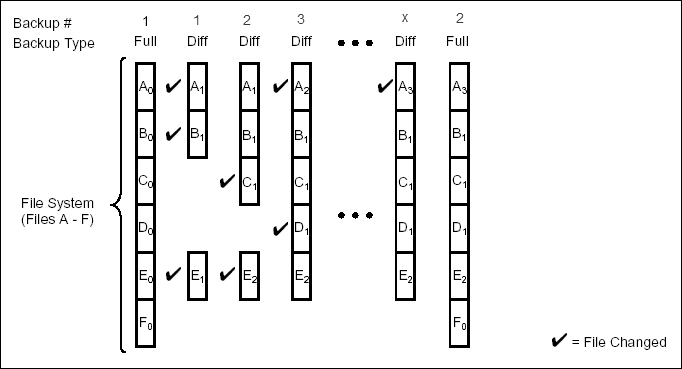A differential backup contains only the data that is new or has changed since the last full backup. Like incrementals, differential backups, on average, consume less media and place less of a burden on resources than full backups.
For most agents, differential backups are cumulative. This means that each differential backup contains all changes accumulated since the last full backup. Each successive differential backup includes the changes of previous differential backup. The Oracle Agent, however, provides a backup option that allows you to specify whether or not you want the backup to be cumulative. The following illustration demonstrates the nature of differential backups. For simplicity, assume there is a file system that contains six files as represented in the following figure. Note that the File System could also represent data such as database tables, Active Directory objects and attributes.

Backup #1 is a full backup and therefore writes all the data to the backup media. Backups #2 through #x-1 are differential backups and only back up those files that changed since the time of the last full backup. For example, files A, B, and E changed after the full backup and were therefore backed up in Backup #2 as well as all subsequent differential backups. File C changed sometime after Backup #2 and was consequently backed up in Backup #3 and all subsequent differential backups. File F did not change; hence, it was not backed up in any of the differential backups, but it was included in both full backups, which, by definition, back up everything.
Note
For the Oracle, DB2, DB2 MultiNode, Informix, SAP and Sybase Agents, the incremental backup process works as described in this section.